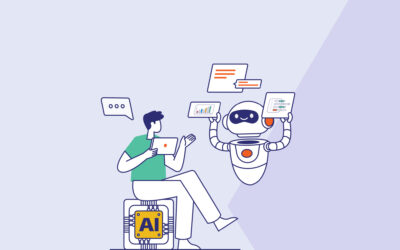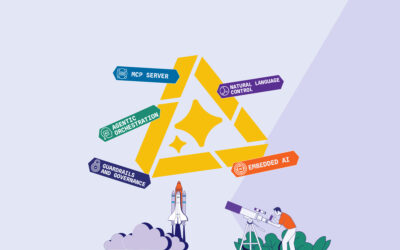As EIS expands globally, we must take our customers and partners with us on this success journey. I recently spoke with Jim Caruso, EVP for EIS’ new Customer and Partner Success Organization, about how he and his team plan to support customer and partner successes and position EIS for even more growth.
Tell us about yourself and how you came to EIS?
My first job was in actuarial for Prudential in the disability and annuities group. Every day, someone from data processing would call and ask how I did my work, mostly manual processes, and calculations. One day he said he was leaving and recommended that I fill his job as programmer/analyst. I moved through the ranks as team leader, program manager, and into consulting services. Then I held global leadership roles in software development, network management, and computer-aided software engineering. Previously I was with Pegasystems, leading insurance/healthcare consulting, Pega Academy, and systems integration effectiveness teams. I met Alec Miloslavsky, our CEO, in 2014 and it was a very easy decision to join EIS.
What’s the Customer and Partner Success Organization?
Our mission is to maintain high levels of contact with customers and partners to drive success, engagement, and accelerate the adoption of EIS products and services. We have consolidated customer relationship management, alliance and partner management, technical enablement, SI effectiveness, and sales support into a single group where we can leverage the relationships, training, and knowledge for end-to-end customer and partner support. It’s a global organization with staff in many countries and time zones. We support all EIS business operations, clients, and partners in EMEA, North America, and AsiaPac.
How do these departments work together for customers and partners?
The customer journey begins with the sales process. We will be involved as early as possible in the sale, when prospects are recognizing the power and potential of EIS software. This shifts the focus from “what” to “how,” and the services available so customers can decide sooner, get to market faster, and achieve the business case benefits.
Carriers need to understand the implementation approach and best practices that produce successful go-lives within budget and on schedule. The sales support team sets the stage for methodology, schedule, and pricing. Because EIS implementations are mostly led by SI partners, their engagement with our alliance team is critical. Mobilization always includes training and certification, so technical enablement is at the table along with the partner effectiveness team, which supports our SI partners throughout the engagement. Finally, the CRM team manages the end-to-end and ensures the EIS/customer relationship is a long and healthy one.
What trends will impact the insurance market in the next 12 to 24 months, and how will your team help carriers address them?
We see three macro trends continuing: A new customer-first foundation of competition and the continued proliferation of distribution; human-centered transformation driving out a new tech-enabled and highly adaptive workforce; and sustainable, fair, and transparency driving insurers to innovate and grow meaningfully.
The most significant impact we can make is to stay as close as possible to our customers’ business plans and help them innovate and grow. At the same time, we have high touch with our SI partners and their advisory services offerings to carriers. The combination leads to the projected outcomes of a carrier’s business case for change.
The high-value impact of EIS software on evolving distribution models and the speed of introducing new products continues to be a strength. The Customer and Partner Success Organization can engage at the right levels and ensure that the ability for SI Partners to engage quickly with a client in terms of skills and continued support is a competitive advantage in the marketplace.
How will you involve customers and partners in the Customer and Partner Success Organization?
Presenting a consolidated and integrated set of services – that reflects our understanding of customers’ and partners’ needs and our ability to adapt – will be a big part of our approach and messaging. The high-touch servicing aspect, combined with a broad set of services and personalized attention is important and a big part of our EIS culture.
What are your top three priorities?
Certification programs and high-value instructor-led training, followed by ongoing support. Second is SI support in terms of ensuring knowledge and best practices for successful EIS implementations are communicated and integrated into our SI best practices. Third is strategic customer engagement to ensure that clients get maximum life-time value from EIS products and services.
What’s the role of the Channel and Product Solutions team, led by Brad Worth?
Brad and his team are critical to developing relationships with our partners. EIS needs partner-led engagements to ensure that carriers know our platform’s ability to transform how they do business, help customers, and become extremely efficient in a competitive market.
Our alliances and technology partners are extremely important to our growth plans. These alliances offer unique experiences, local knowledge, advisory relationships, and their global reach is critical to EIS’ growth. EIS has a focused and selective approach to alliances, but we’ve taken a deliberate approach to identify and work with those alliances who bring deep experience in the program transformation space: advisory, program leadership, and deep implementation and delivery capabilities. Our system integrator and technology partners are best in class. I look forward to our continued open, productive, and mutually beneficial partnerships in this exciting and constantly changing industry.
When it comes to customers and partners, what does EIS need to improve?
The first thing is to consolidate the EIS teams to form a stronger unit that can support the mission. Providing clear direction to all staff involved is something we can do better, and ultimately, being on the same page will elevate the level of services provided to customers and partners. “Fit for purpose” is the second thing: making sure that the CAPSO objectives and products/services are not only aligned to the market needs but constantly re-evaluating as business change happens across the EIS ecosystem.
What value does your team put on our partners? How do we help each other?
Our partners are incredibly important. The SIs have the industry knowledge, strategy consulting, transformation program management capability, and depth to support clients through an EIS implementation. They also have relationships with carriers and can provide access and strategic advice on the best platforms to meet the customer’s objectives. Our SI partners then bring the skills of their global workforce, utilizing EIS software and best practices to provide ongoing services.
I know you enjoy cooking. What was your most memorable experience? Do you get much time to cook?
I spend as much time in kitchens as possible. Not only my own, but also friends’, family, and anybody who lets me into their kitchen sanctuary. The orchestration of a meal — from ingredients to something people enjoy — always pulls me in. The self-imposed pressure of overcoming miffed recipes and still pulling them together “on time and on schedule” is similar to my day job.
During the height of the pandemic, we had an all-day Zoom. We sent ingredients and beverages to each person. After the meeting, we turned the Zoom camera into my kitchen and cooked together. It was a much-needed team-building session. It’s known as the day we all made “Caruso Gravy.” I do get enough time, especially when at someone’s home and they say, “what should we do for dinner?” That’s when I say: Can I go to your cupboard and gather some ingredients? When they say “yes,” the adrenaline starts to flow…
Sound interesting? We should chat. Learn more about how cloud-native coretech is helping ambitious insurers realize their goals. Talk to us.




